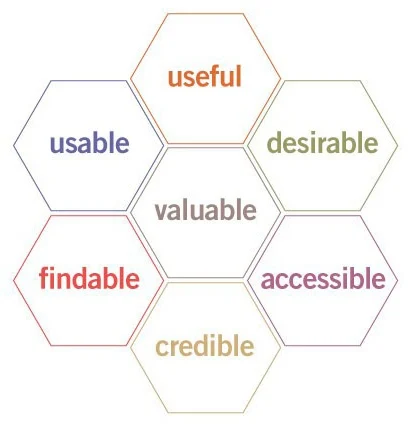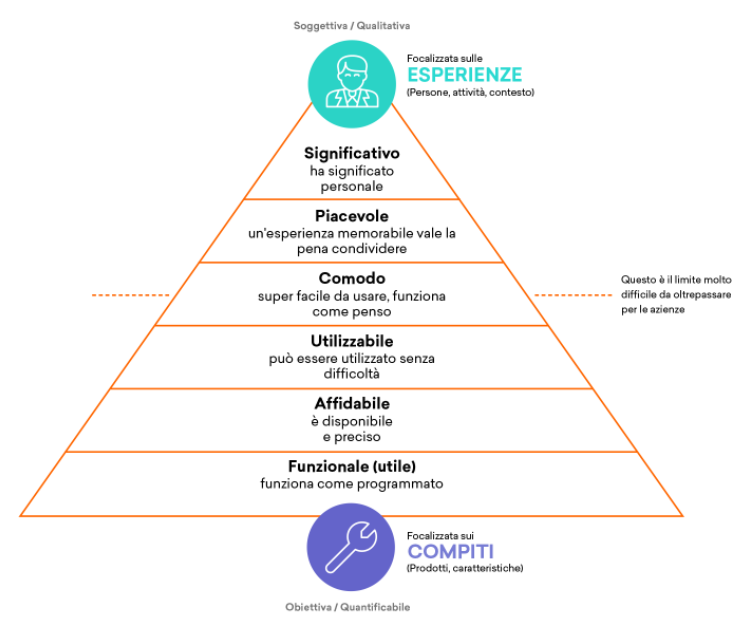Usability vs. User Experience: What Are the Roles and the Main Differences?
The terms Usability and User Experience are often confused and misused. These are interrelated disciplines, but they are certainly far from being synonymous.
Join the DZone community and get the full member experience.
Join For FreeThe terms Usability and User Experience are often confused and misused. These are interrelated disciplines, but they are certainly far from being synonymous. They have the interaction between the user and an object/platform.
In this article, we will try to clarify some doubts about this issue.
Difference Between Usability and User Experience
Usability is a narrower concept than user experience because it focuses on "effectiveness, efficiency, and satisfaction in helping selected users achieve specific goals in specific environments" (ISO 9241-11). User experience, on the other hand, concerns “all aspects of the user's experience while interacting with the product, service, environment or function” (ISO 9241-210).
While trying to contextualize these definitions in the web environment, the purpose of usability is to create sites and platforms that are usable and easy to use, while the goal of UX is to provide an unforgettable user experience before, during, and after the use of a particular platform. . In summary, Usability refers to the ease with which users interacting with a site achieve a goal, while User Experience evaluates the satisfaction of user interaction with the site.
To better clarify the concepts presented, let's analyze Usability and User Experience separately.
What Is User Experience?
In terms of design, User Experience is a dimension that focuses on a specific usage context, putting the features and needs of users at the center.
In other words, it is equivalent to the subjective degree of dependence between expectations and satisfaction in interacting with a system, whether physical or digital.
Donald Norman introduced the concept, but as noted, there is still a lot of confusion about the term "user experience" because it is often misunderstood as "usability" despite the exact literature, precisely the Nielsen Norman Group definition. Clear about:
“User experience (UX) design encompasses all aspects of the interaction between the end-user and the company, its services, and products." The first requirement for an outstanding user experience is to meet specific customer needs.
But then comes the simplicity and elegance of the product, which arouses the user's curiosity to own and use it. Actual user experience goes far beyond giving users what they want or providing them with multiple features. To achieve a high-quality user experience, a company's offering must include multiple services and disciplines, including engineering, marketing, graphic and industrial design, and interface design. "Jakob Nielsen, Donald Norman news.
Due to its interdisciplinary nature, the ultimate goal of UX is to be able to influence all aspects revolving around a platform when the service interfaces with a client. These aspects can be summed up in one distinctive feature that Peter Morville collected in the chart: the UX honeycomb, named for its “honeycomb” shape, or rather the hexagonal cells, as bees do in hives.
Useful: the contents of the interface must be original and satisfy a real need, that is, be “useful” for the user.
Usable: The interface must be easy to use.
Desirable: All design elements (image, identity, brand) are used to evoke emotions.
Findable: the contents must be findable, navigable, and localizable.
Accessible: the contents of the interfaces must be usable by people with disabilities.
Credible: It is essential to develop a feeling of trust with users.
Valuable: Combining these aspects leads to providing a memorable experience for users.
What Is Usability?
Usability, i.e., the degree of effectiveness, efficiency, and satisfaction with which the human interacts with the machine, is, in a nutshell, only one component of the User experience: a site can be used without guaranteeing a pleasant user experience.
“Usability is a quality indicator that defines how simple an object/platform is to use. More precisely, it outlines the degree of learning and efficiency for its intended use. This functionality may not be available if the user fails or does not want to use a particular function of an object or program. " Jakob Nielsen, Hoa Loranger - Web Usability 2.0
Usability also refers to ways to improve ease of use in the interface design process and is defined by five qualitative components:
Learnability: How easy is it for users to perform basic tasks the first time they are in front of the interface?
Efficiency: when users have learned how to use the interface, how quickly can they carry out the tasks?
Memorability: When users return to using the interface after a period of inactivity, how easily can they reach the previous degree of efficiency?
Errors: How many errors do users make (how serious are they), and how easily can they be fixed?
Satisfaction: how pleasant is it to use the interface?
The concept of User Experience is, therefore, more complete than practical. As mentioned above, usability focuses on the performance and satisfaction of users in achieving their goals in specific usage contexts. On the other hand, UX aims to strike a balance between work-based and non-operational aspects of using a collaborative system.
We take an article from Stephen P. Anderson's "User Experience Pyramid," introducing the differences between the two concepts even at the visual level.
Mixing UX with usability is a common mistake, but, as has been suggested in this post, usability is not more than one of the UX building blocks; some products provide a fantastic experience but are far from usable and, on the other hand, the most valuable tools yet do not offer more and do not guarantee a complete and accurate UX.
The same mistake should not be made in UX confusion with any of its components: UX is not just a User Interface, UX is not just an Information Architecture, and UX is not just a Personal Computer Interaction. The user experience is a complex process in which all of these factors, whether functional or emotional, or cultural, come together to create all that is perceived as good sense (and, consider the Ferrari Experience). Many features under the term UX cover all the app's different features.
Opinions expressed by DZone contributors are their own.



Comments